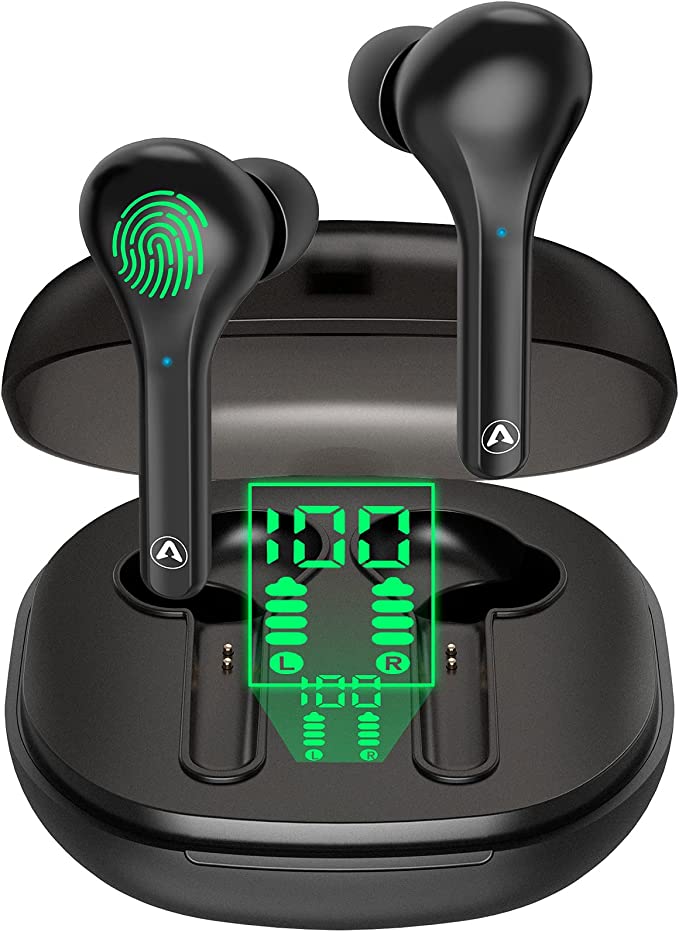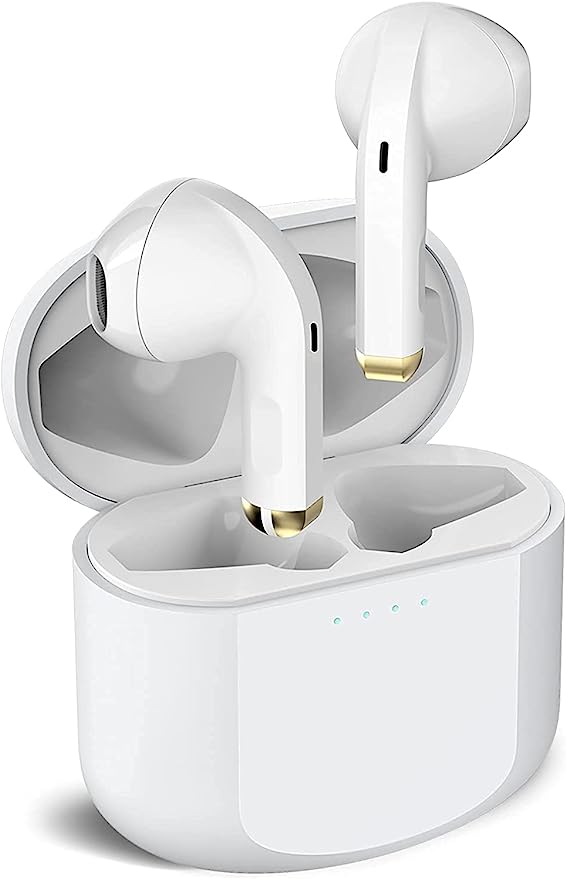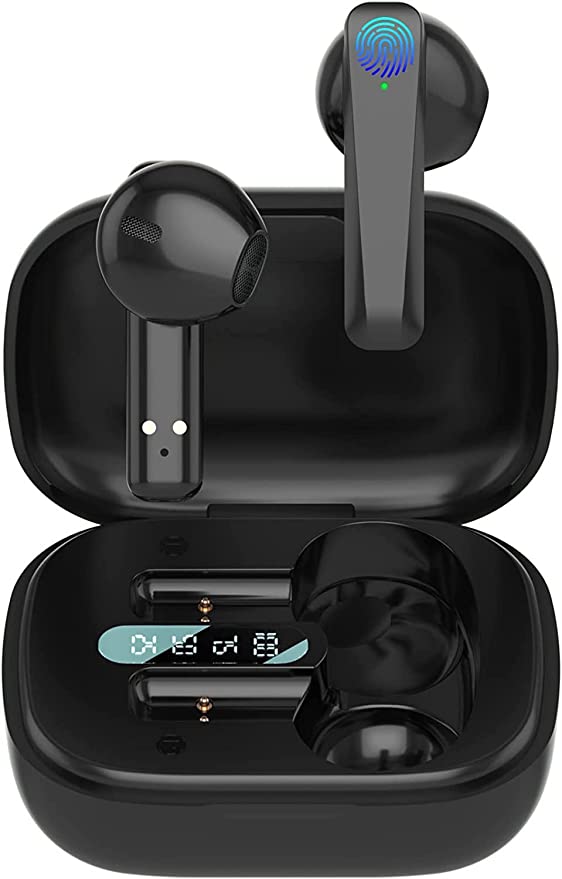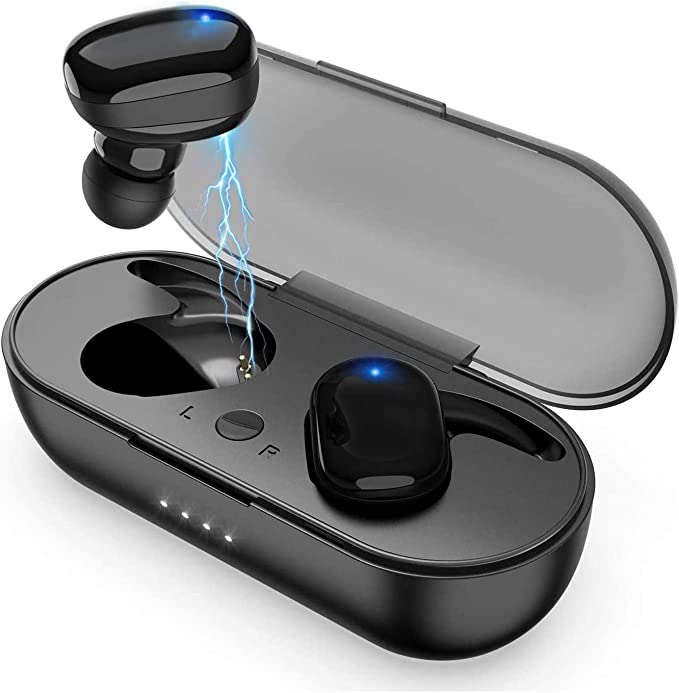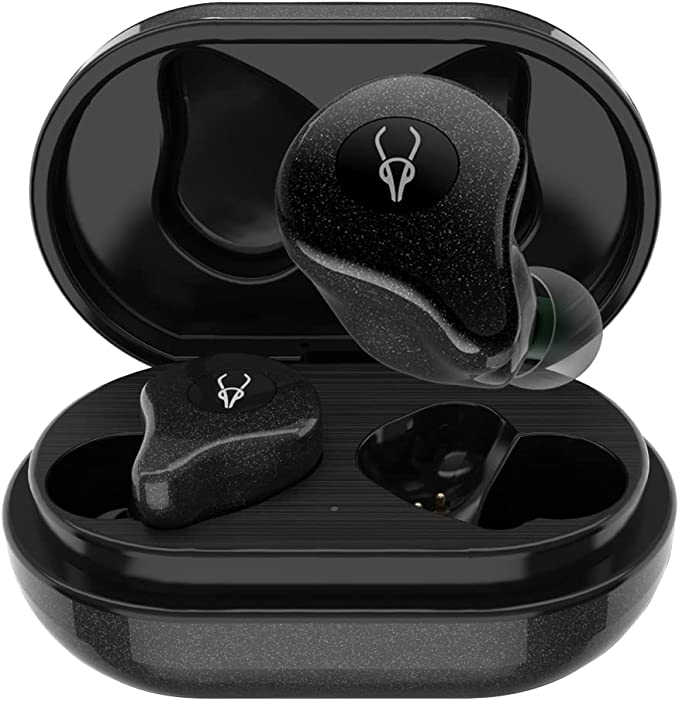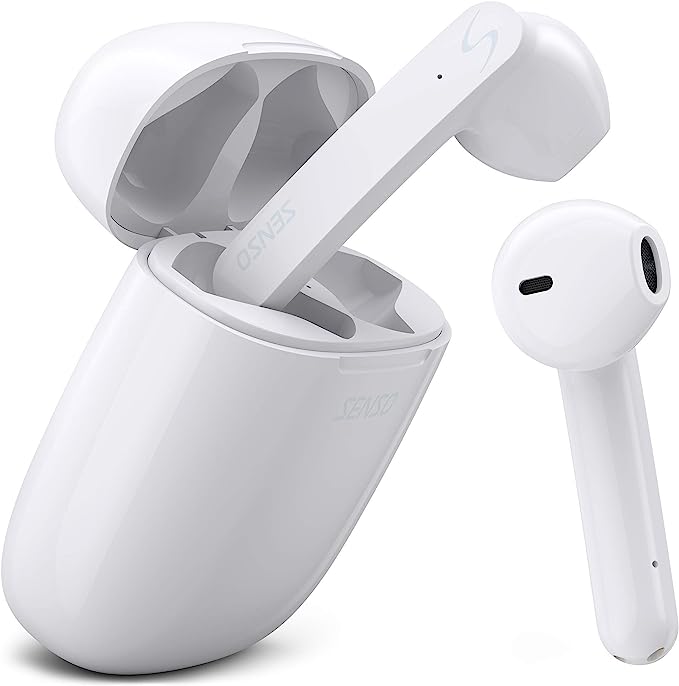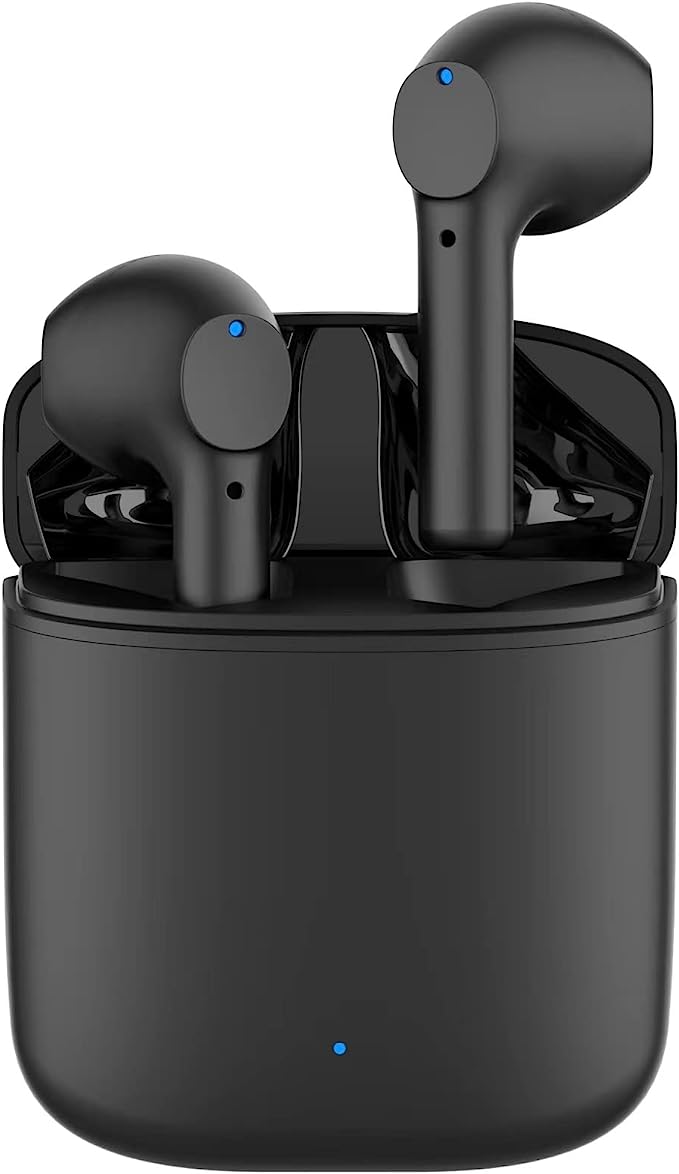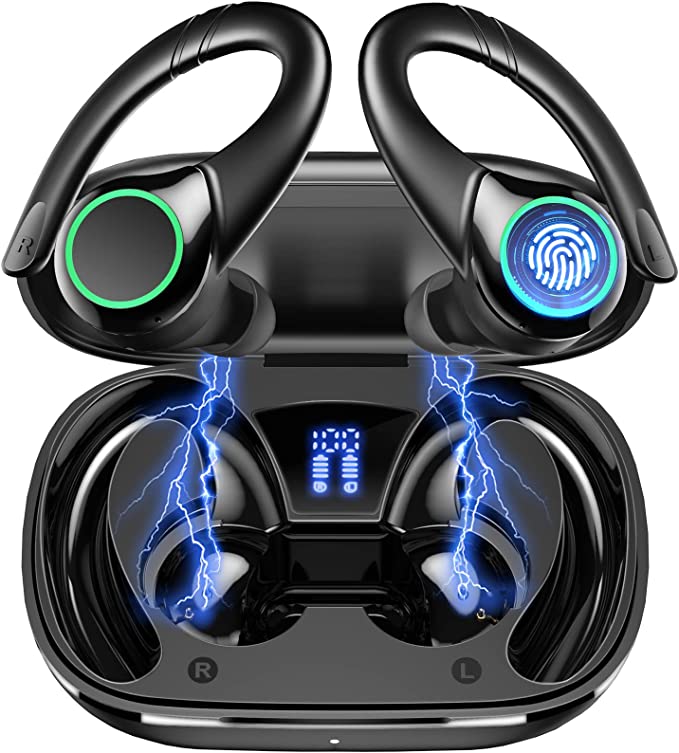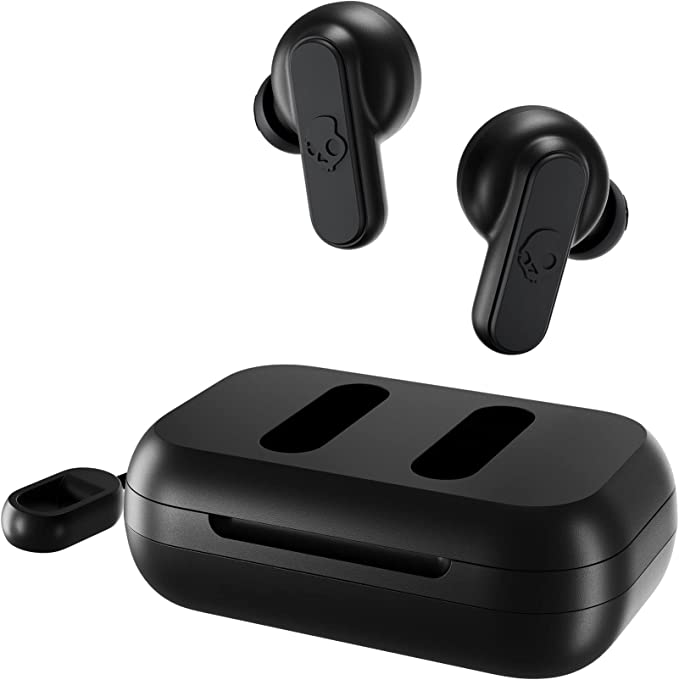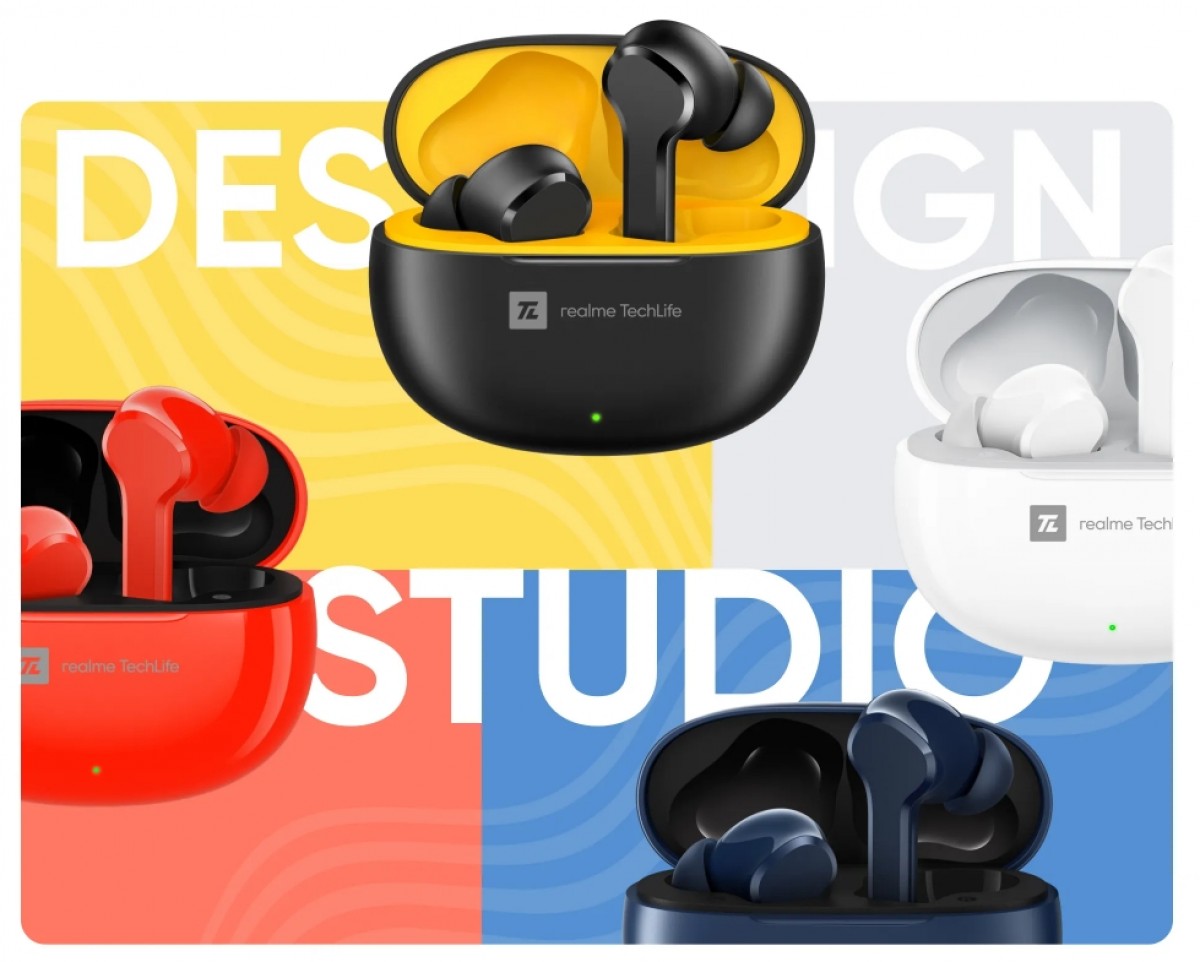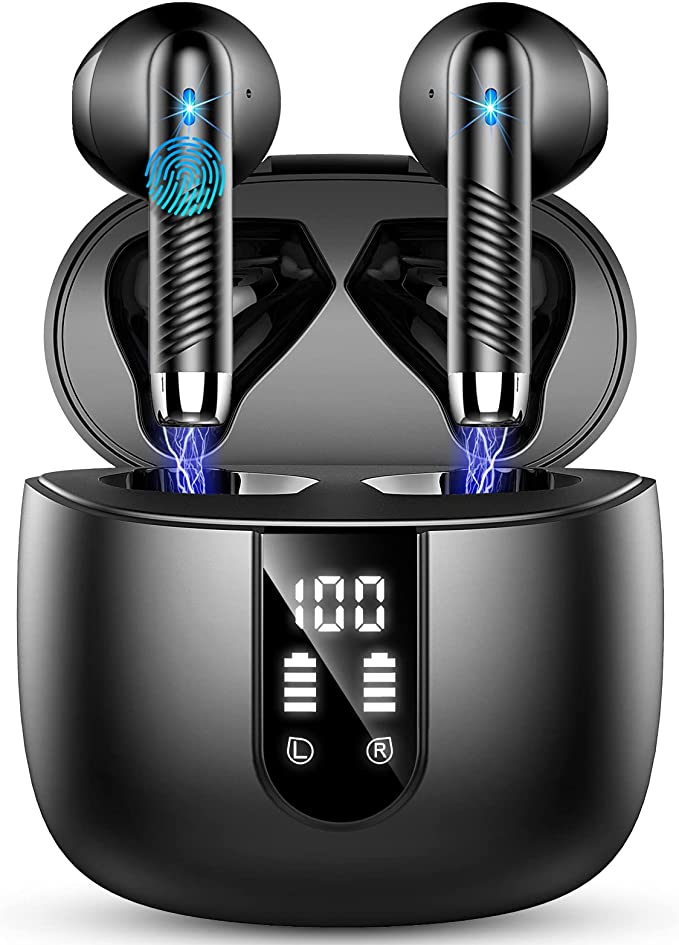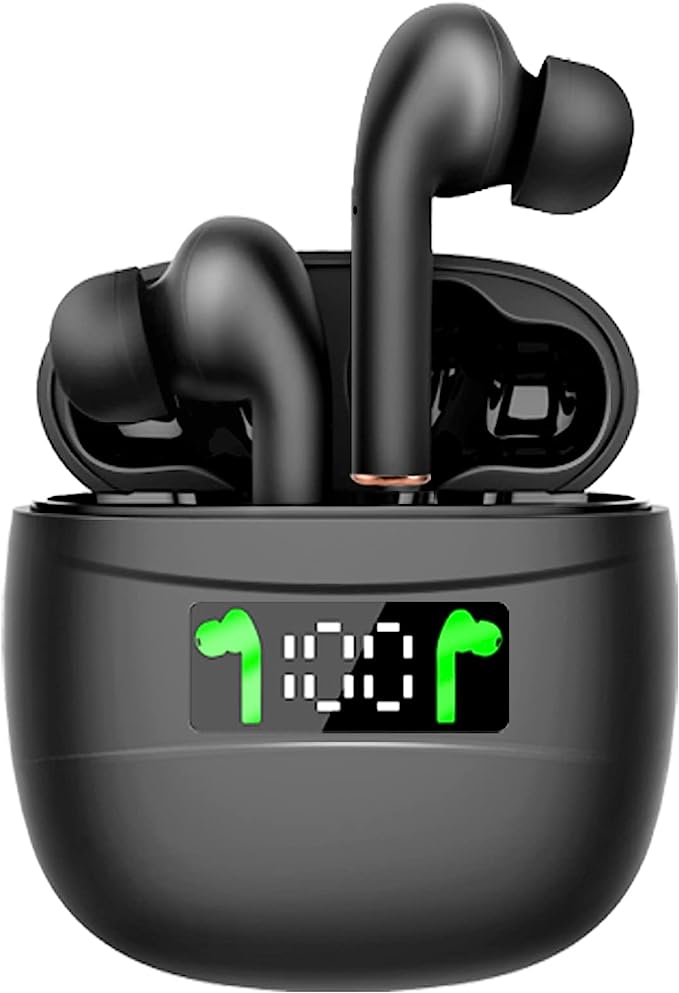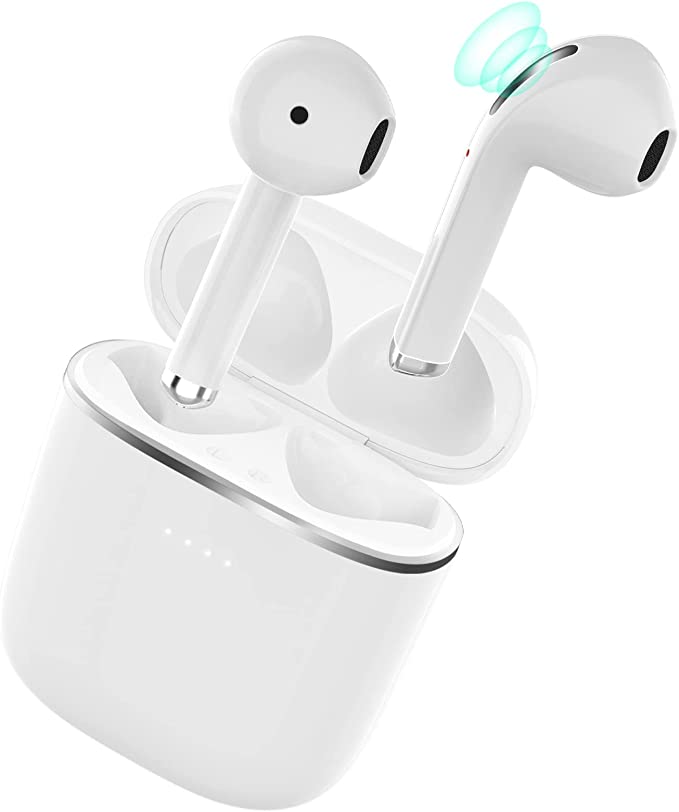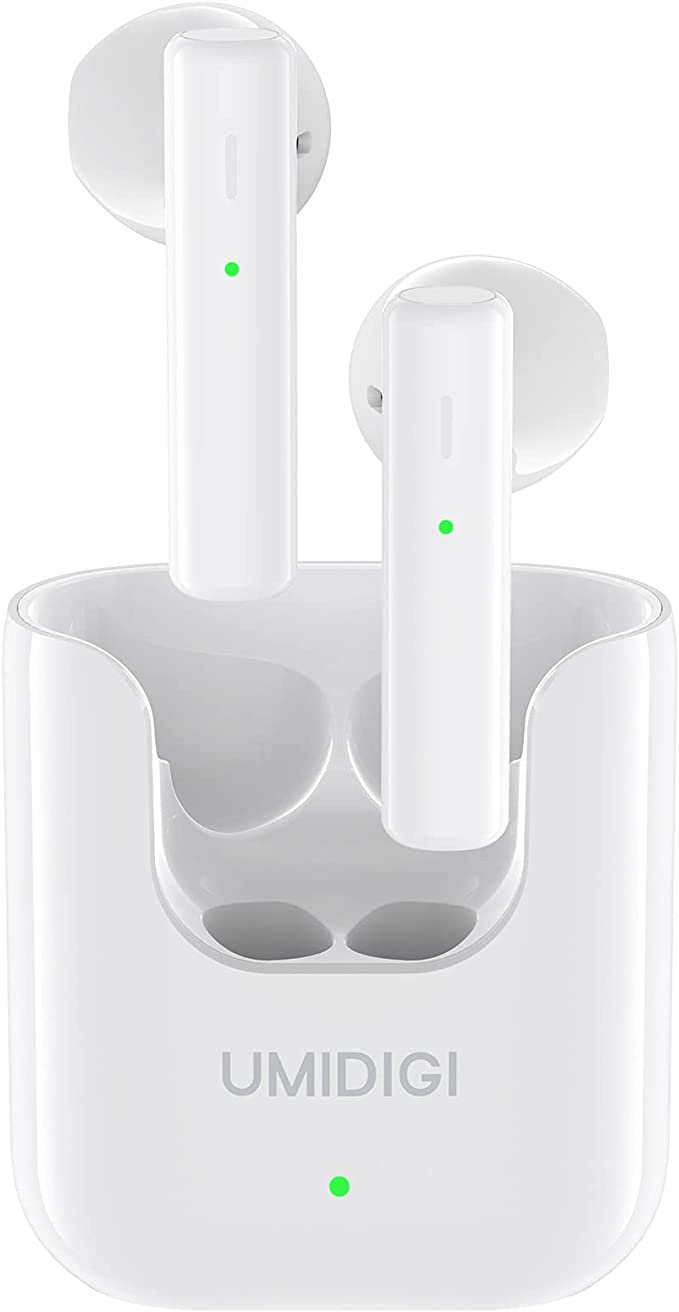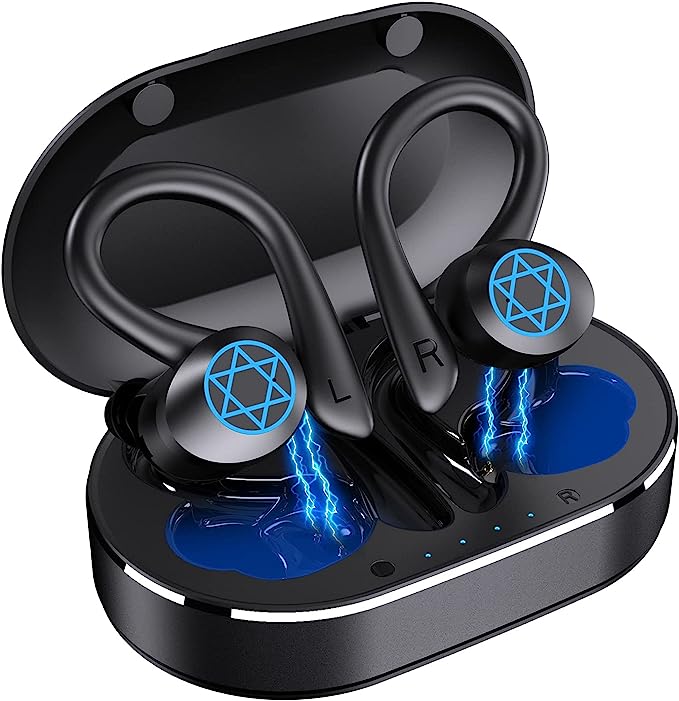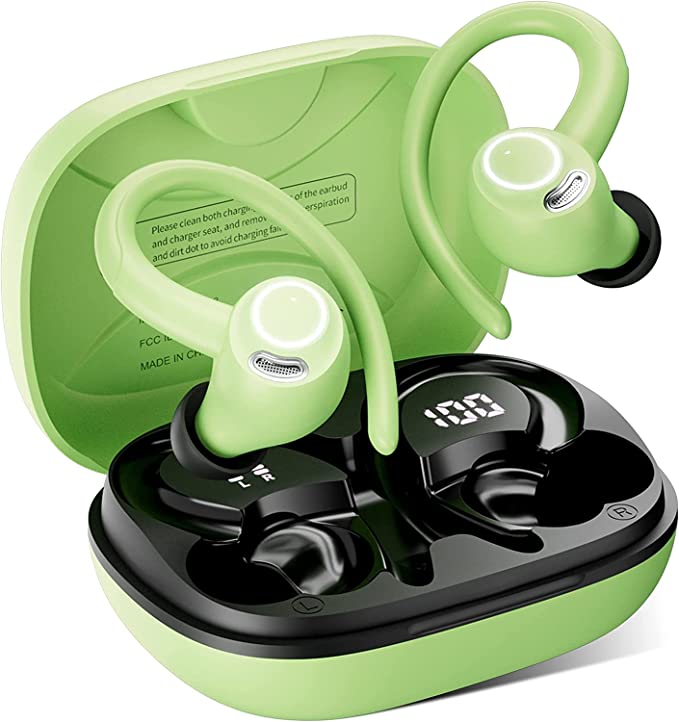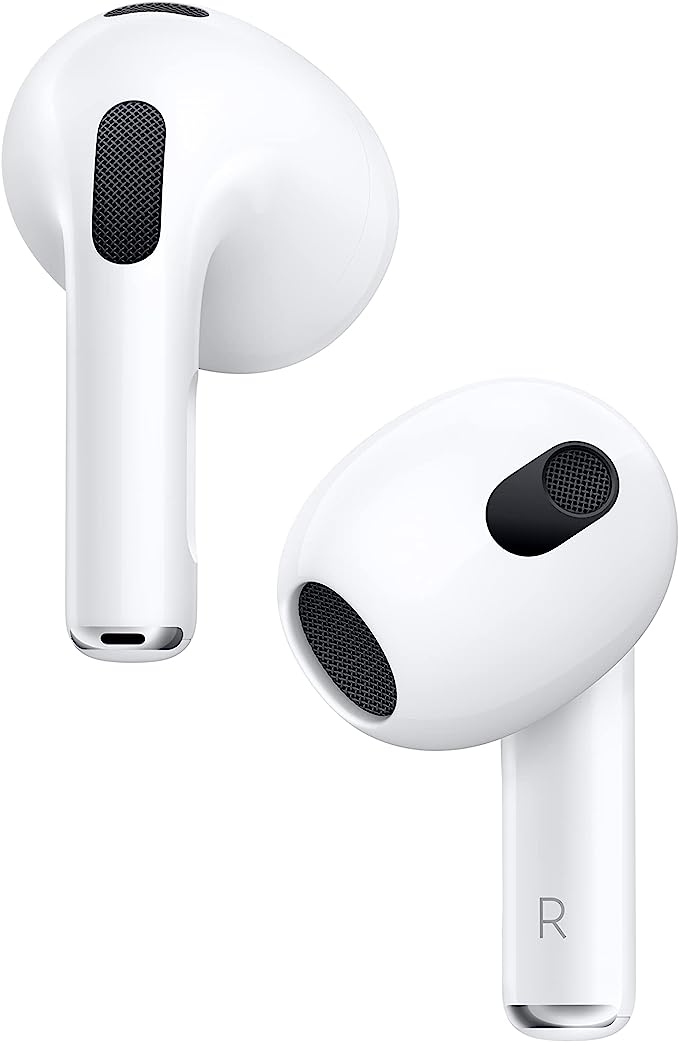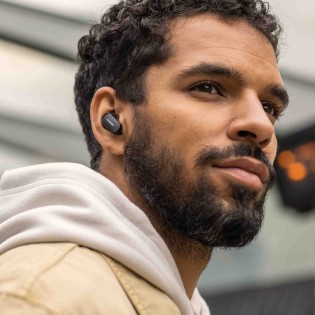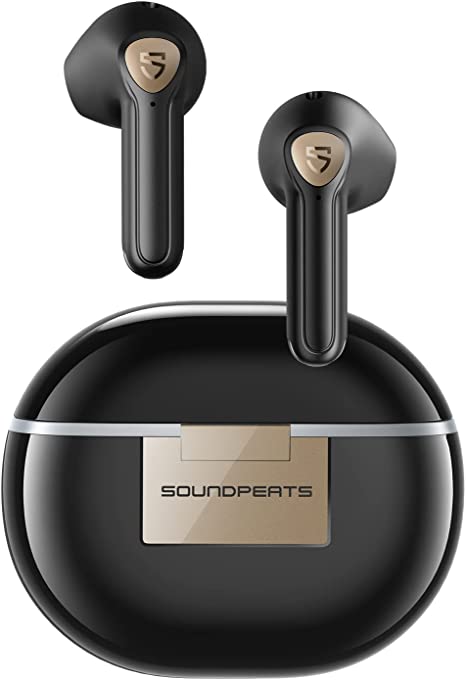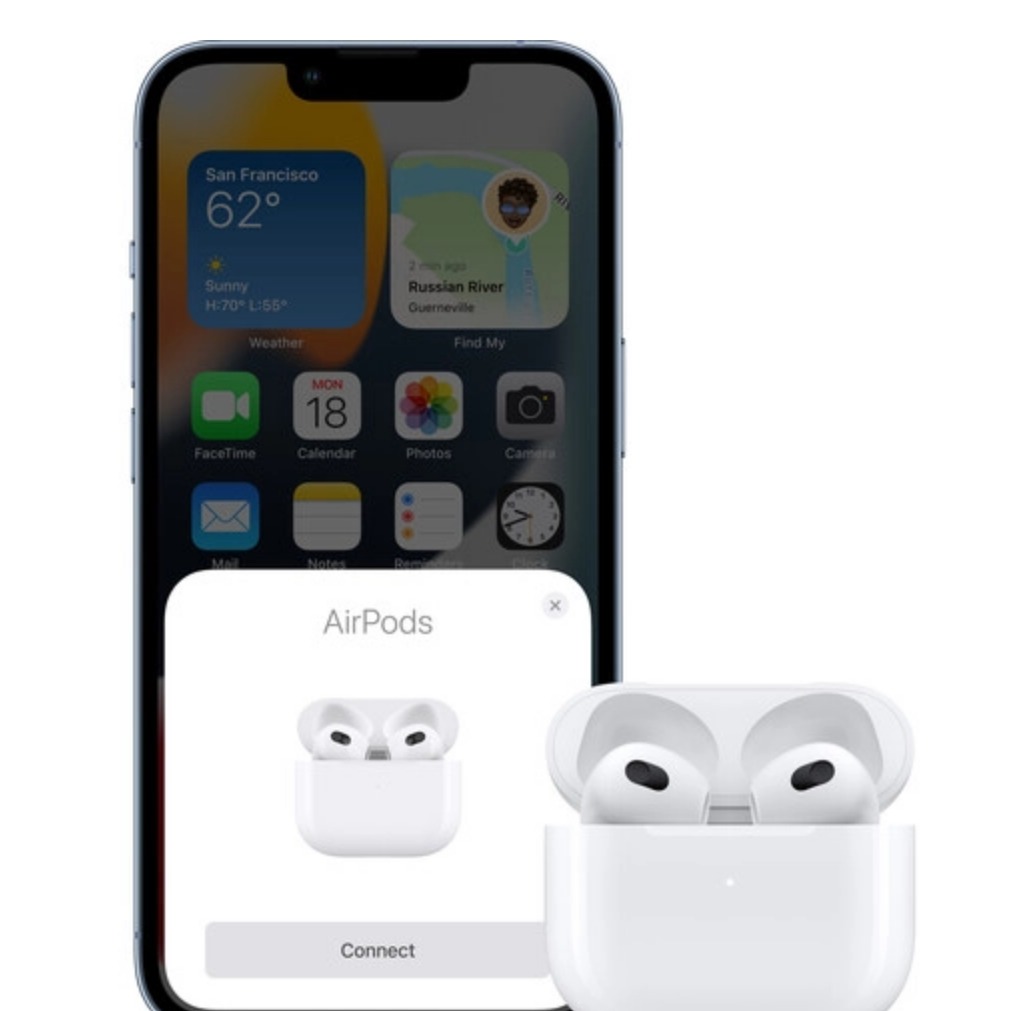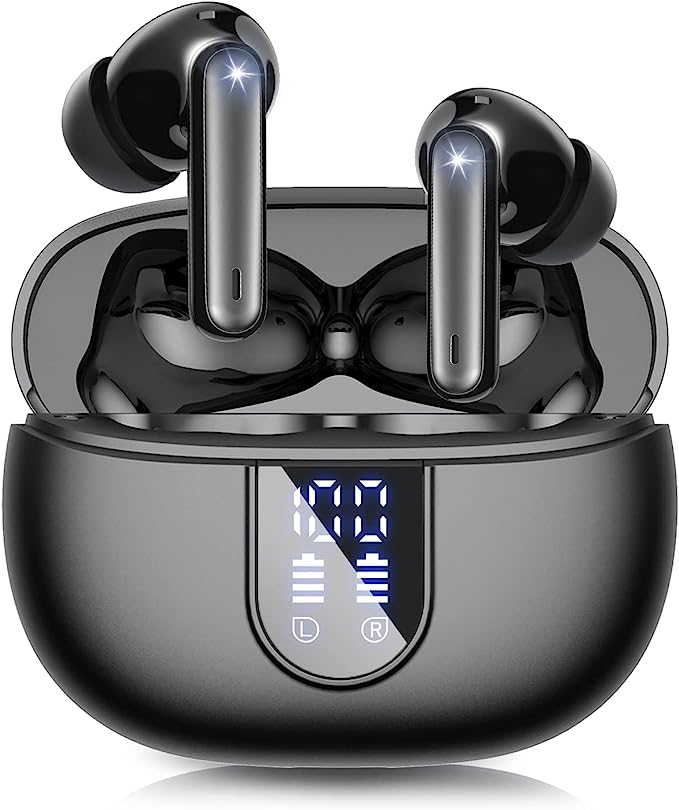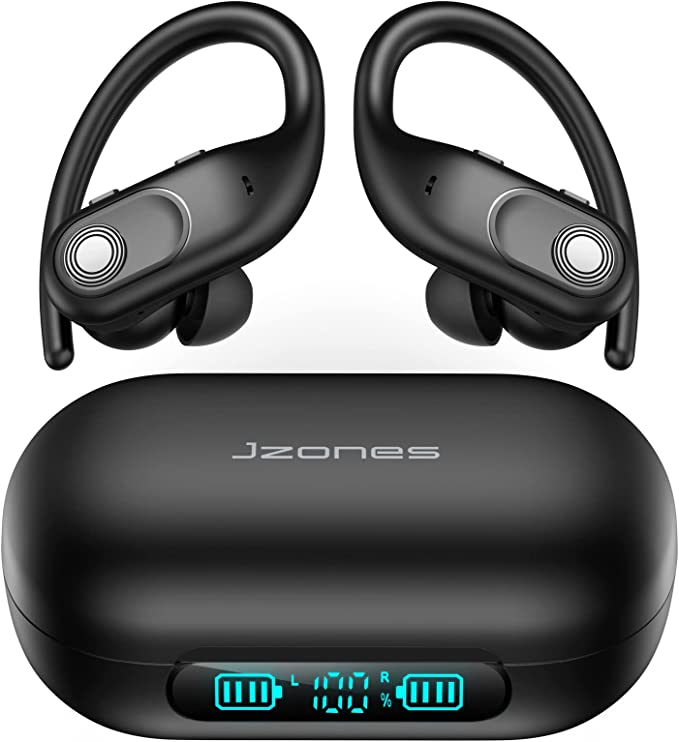ASIMOM T82 Retrobuds: The Science of Sound & Wireless Freedom Unveiled
Update on May 30, 2025, 5:06 p.m.
It’s a familiar scene: the frantic untangling of the Gordian knot that is a pair of wired earbuds, a daily ritual of minor frustration before the first note of a morning playlist can even begin. Or perhaps it’s the sudden, unwelcome yank as a cable catches on a doorknob, abruptly severing your connection to a captivating podcast. These tiny daily battles heralded a collective yearning for liberation – a desire that wireless technology, particularly in the realm of personal audio, has eagerly answered. Today, sleek, cable-free earbuds are virtually ubiquitous, nestled in ears across bustling cityscapes and quiet suburban parks alike. Among this new wave of audio companions is the ASIMOM T82 Retrobuds, a contender aiming to strike that elusive sweet spot between affordability and a feature-rich experience. But have you ever paused to wonder what intricate dance of science and engineering unfolds within these diminutive devices each time you tap play? Let’s embark on an exploratory journey to uncover the marvels of miniature technology packed into these “retro new sounds.”

The Art of Connection: Bluetooth 5.0 and TWS’s Invisible Dance
The story of wireless audio is, in many ways, the story of Bluetooth. Born from a vision in the late 1990s at Ericsson in Sweden (and charmingly named after Harald Bluetooth, a 10th-century Danish king famed for uniting disparate Danish tribes), Bluetooth technology was conceived as a short-range radio standard to allow devices to “talk” to each other without the clutter of cables. What started as a niche technology for mobile headsets has blossomed into a cornerstone of our interconnected world, enabling everything from wireless mice to smart home devices.
The ASIMOM T82 Retrobuds leverage Bluetooth 5.0, a significant step in this evolutionary journey. Think of the upgrade from older Bluetooth versions (like 4.2) to 5.0 as moving from a winding country lane to a multi-lane expressway. Bluetooth 5.0 offers potentially faster data transfer speeds and, more crucially for earbuds, improved connection stability and greater power efficiency. This isn’t just about numbers on a spec sheet; it translates to fewer annoying dropouts when your phone is in your pocket, a more reliable audio stream, and earbuds that can last longer on a single charge – a critical factor for devices so small. The T82’s promise of “One-Step Auto Pairing” often relies on this robust Bluetooth backbone, sometimes assisted by clever little components like Hall sensors in the charging case that detect when you flip the lid, waking the earbuds and prompting them to swiftly reconnect to your last paired device. It’s like a secret handshake; once a bond is formed, recognition is almost instantaneous.
But the real magic for a stereo listening experience lies in True Wireless Stereo (TWS) technology. Before TWS, “wireless” headphones often still had a wire connecting the two earpieces. TWS, however, means each earbud can connect independently, or one acts as a primary conduit relaying the signal to its partner. This allows for a genuine separation of left and right audio channels, creating that immersive, three-dimensional soundscape we crave. With the T82, this “dual ballet” of independent yet synchronized earbuds aims to deliver your music, podcasts, or calls with clarity and spatial richness, truly freeing your ears.

The Genesis of Sound: A 13mm Driver’s Vocal Practice
At the very core of any sound-producing device, from massive concert speakers to the tiny earbuds nestled in your ears, lies a driver. It’s the component that takes an electrical signal and, like an alchemist, transmutes it into the audible vibrations we perceive as sound. The ASIMOM T82 Retrobuds house 13-millimeter dynamic speaker drivers. Imagine a miniature, highly sophisticated drum. A dynamic driver consists of a diaphragm (the “drum skin”), a voice coil attached to it, and a permanent magnet creating a magnetic field. When the electrical audio signal (your music) flows through the voice coil, it becomes a temporary electromagnet that rapidly moves back and forth within the permanent magnet’s field, pushing and pulling the diaphragm. This vibration of the diaphragm displaces air, creating pressure waves – and voilà, sound is born!
The “13mm” refers to the diameter of this diaphragm. Generally, a larger diaphragm can move more air, which can be particularly beneficial for reproducing lower frequencies – the bass notes that give music its warmth and punch. So, a 13mm driver in an earbud is relatively generous, potentially offering a richer, more powerful bass response compared to smaller counterparts. However, size isn’t everything. The material of the diaphragm, the design of the earbud’s acoustic chamber, and, crucially, the “tuning” – how the manufacturer fine-tunes the driver’s response across different frequencies – all play vital roles in shaping the final sound signature. The goal is to create a balanced and engaging stereo sound, where bass, midrange, and treble frequencies are all represented clearly, allowing you to hear the thumping bassline, the clear vocals, and the crisp cymbals in your favorite tracks. It’s a delicate balancing act, a blend of science and artistry, all happening within a space smaller than a coin.

Clarity in the Cacophony: Four Microphones and Intelligent Noise Reduction’s Quiet Conversation
In our increasingly mobile and often noisy world, earbuds are no longer just for passive listening; they’re crucial tools for communication. Making a clear phone call while navigating a bustling street or a crowded café can be a challenge. This is where microphone technology and intelligent audio processing step in. The ASIMOM T82 Retrobuds are equipped with four built-in microphones. Why so many? It’s about teamwork. Often, in such a setup (known as a microphone array), some microphones are positioned to primarily capture your voice, while others are strategically placed to pick up ambient noise from your surroundings.
This is where the “intelligent” part comes in, primarily through Digital Signal Processing (DSP) and technologies like CVC (Clear Voice Capture). DSP is essentially a microchip acting as a tiny, incredibly fast audio engineer. It takes the signals from all microphones and uses complex algorithms to distinguish your voice from the unwanted background noise. Think of it like a highly sophisticated sieve, letting your voice pass through while holding back the clatter of a coffee shop or the rumble of traffic. CVC, often a suite of algorithms licensed from companies like Qualcomm, further refines this process, specifically targeting and suppressing environmental noise to enhance the clarity of the transmitted voice. The aim is to make your voice sound crisp and clear to the person on the other end, even if your physical environment is less than serene. It’s a constant, real-time audio cleanup crew working to ensure your conversations cut through the noise.

Powering Your Day, Understanding Your Needs: Battery, Charging, and the LED Display’s Comforting Glow
The untethered freedom of wireless earbuds comes with a dependence on an often-invisible power source: the battery. Like most modern portable electronics, the T82 Retrobuds rely on Lithium-Ion (Li-ion) batteries. These are favored for their high energy density (packing a lot of power into a small space) and relatively light weight – both critical attributes for something you wear in your ears. The earbuds themselves are rated for up to 5 hours of playtime on a single charge. But the journey doesn’t end there. The accompanying charging case, which the product description states has a 400mAh (milliampere-hour) capacity, acts as a portable power bank, extending the total listening time to a claimed 30 hours.
What does 400mAh mean? Milliampere-hour is a unit that measures electric charge, essentially indicating how much current a battery can provide for a certain amount of time. A higher mAh rating generally means more “fuel in the tank.” So, the case can recharge the earbuds multiple times before it, too, needs a top-up via its Type-C port (a modern, reversible connector that’s increasingly standard).
One of the most user-appreciated features on the T82’s case is the digital LED power display. This small screen, often showing a percentage, gives you an at-a-glance indication of how much charge is remaining in the case itself. It’s a simple yet profoundly practical feature. No more guessing games or an
xiety about whether your case has enough juice for the day. This “mind-reading” display, as some users might perceive it, removes a layer of uncertainty and empowers you to manage your power needs proactively. It’s a small touch, but one that significantly enhances the everyday usability and “peace of mind” factor.
Ready for Reality’s Spills and Thrills: IPX6 Water Resistance and Lightweight Design’s Embrace
Life is unpredictable. A sudden downpour during your commute, an unexpectedly intense workout session – these are everyday realities. For a device designed to be an almost constant companion, a degree of resilience is not just a bonus, it’s a near necessity. The ASIMOM T82 Retrobuds come with an IPX6 water-resistant rating. Let’s decode that. “IP” stands for Ingress Protection, a standard defined by the International Electrotechnical Commission (IEC). The first digit after IP refers to protection against solid particles (like dust). In IPX6, the “X” means the device hasn’t been specifically rated for dust protection (or the manufacturer chose not to test/certify for it). The second digit, “6” in this case, is the crucial one for water. An IPX6 rating means the earbuds are protected against powerful water jets from any direction.
What does this translate to in practical terms? It means the T82s should comfortably withstand sweat during vigorous exercise, splashes of water, or being caught in the rain. This makes them a reliable partner for your gym sessions, outdoor runs, or just daily life where minor encounters with moisture are inevitable. However, it’s vital to understand the limits. IPX6 is about resistance to water jets, not about being fully waterproof for submersion. So, while they’re fine for a sweaty workout, taking them for a swim is definitely not recommended.
Beyond resilience, comfort is king, especially for a device you might wear for hours. The T82s are touted for their lightweight design, with a single earbud weighing a mere 3.5 grams. To put that in perspective, a standard sheet of A4 paper weighs around 5 grams! This featherlight construction, often combined with an ergonomic “semi in-ear” design (which doesn’t sit as deeply in the ear canal as fully in-ear monitors), aims to minimize pressure points and ear fatigue. This can be particularly beneficial for users with smaller ear canals or those who find more intrusive earbuds uncomfortable over long periods. The goal is a secure yet “barely there” feeling, allowing you to focus on your audio, not on the device delivering it.
Magic at Your Fingertips: The Convenience of Smart Touch Controls
In the quest for sleek, minimalist design and seamless interaction, physical buttons on earbuds are increasingly giving way to smart touch controls. The ASIMOM T82 Retrobuds feature this “invisible button” technology. Instead of pressing a clicky button, you simply tap or hold a designated touch-sensitive area on the earbud’s surface. These controls typically rely on capacitive sensing. Your body, including your fingertips, is electrically conductive. When your finger touches the sensor, it changes the local electrostatic field (capacitance) at that point. The earbud’s internal electronics detect this minute change and interpret it as a command – a single tap for play/pause, a double-tap to skip a track, a long press to manage calls, and so on.
The convenience is undeniable. It allows for a cleaner design aesthetic and can be more intuitive once you get the hang of it. No more fumbling for tiny buttons or pressing an earbud uncomfortably deeper into your ear. However, touch controls aren’t without their quirks. New users might experience a slight learning curve, figuring out the exact tap pressure or gesture required. Accidental touches, perhaps when adjusting the earbud or if hair brushes against it, can sometimes trigger unintended actions. This is a common characteristic of many touch-sensitive devices, but often, a little practice is all that’s needed to master these digital commands and enjoy the streamlined control they offer.

Retro Charm Meets Modern Tech: A Harmonious Blend?
The “Retrobuds” name itself evokes a sense of nostalgia. While the core technology packed within is undeniably modern, the T82’s aesthetic, particularly the charging case with its prominent LED display, might hint at design cues from a bygone era of electronics, perhaps the blocky charm of 80s or 90s gadgets. This blend of retro styling with contemporary functionality is a popular trend in consumer electronics. It appeals to a desire for familiar, comforting aesthetics while still delivering the cutting-edge performance we expect today. Whether it’s the shape, the finish, or just the name, these design choices aim to give the product a distinct personality, setting it apart from a sea of otherwise similar-looking devices. It’s a reminder that technology isn’t just about cold, hard specifications; it’s also about how it makes us feel, the connections it evokes, and the way it fits into our personal style.

The Accessible Symphony: When Technology Becomes Everyday Magic
The journey through the ASIMOM T82 Retrobuds reveals a fascinating microcosm of modern consumer electronics. Features that were once the preserve of high-end, expensive devices – True Wireless Stereo, active noise processing for calls, decent battery life, water resistance, and intuitive touch controls – are increasingly finding their way into more affordable packages. This “democratization” of technology is a powerful trend. It’s driven by the relentless pace of innovation, the scaling of manufacturing, and the increasing sophistication of microelectronics.
What the T82 and similar products represent is not necessarily the absolute pinnacle of audio fidelity or the most groundbreaking new invention, but rather the skillful integration of mature, reliable technologies into a product that aims to be accessible to a broad audience. They show how complex science – the physics of sound, the intricacies of radio wave communication, the marvels of micro-battery power, the logic of digital signal processing – can be harnessed and packaged into something small, user-friendly, and, importantly, budget-friendly.
So, the next time you pop in your wireless earbuds, any wireless earbuds, take a moment. Consider the invisible symphony of processes unfolding: the Bluetooth radio waves flawlessly bridging the gap to your phone, the tiny diaphragms vibrating thousands of times per second to recreate your favorite song, the miniature microphones working to isolate your voice. It’s a testament to human ingenuity, a little piece of everyday magic. The ASIMOM T82 Retrobuds, with their blend of retro-inspired design and a solid suite of modern features, serve as a compelling reminder that understanding the technology around us doesn’t require an engineering degree, just a spark of curiosity. And in that understanding, we can find a deeper appreciation for the tools that shape our daily soundscapes and keep us connected to our world.
